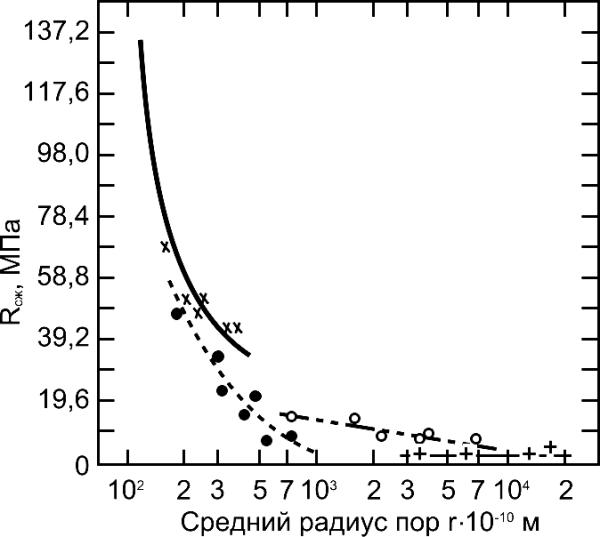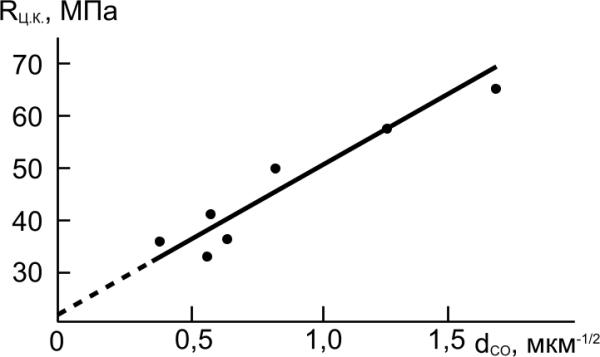,
(4
.3)
where X-ratio between volume of cement hydrate gel and the sum of
volumes of cement gel and capillary space; A-coefficient characterizing
strength of cement gel; n-constant (from 2.6 to 3).
The parameter Х can be considered as a relative density of cement paste
(stone).
74






a P
, M
cmpR
Middle radius of pores (r⋅10-10 m)
Fig. 4.2. Relationship between compressive
strength (Rcmp) and middle size of pores of
cement paste (stone)
75





The condition of development of crack in concrete can be determined from
Griffith and Orovan formula:
σ = Еν / d = kd 1
− / 2 , (4
.4)
ср
ср
where σ-tensile stress; E-modulus of elasticity; ν-effective energy of
destruction; d - average size of a crystal;
as
k = (Eν)−1/ 2 - coefficient of viscidity of destruction.
Strength of concrete depends on deformations arising up at loading.
76






Rc.s, MPa
dср
as , 10-6m
Fig. 4.3. Relationship of strength of the cement
stone Rc.s and average size of crystals das
77





4.2. Law (rule) of water-cement ratio
The fundamental works of Feret, Abrams, Bolomey and other researchers
determined wide application in practical technology of the water-cement
(W/C) law (rule) and based on it computation formulas.
After processing results more than 50 thousand tests, Abrams offered a
formula:
k
R =

























